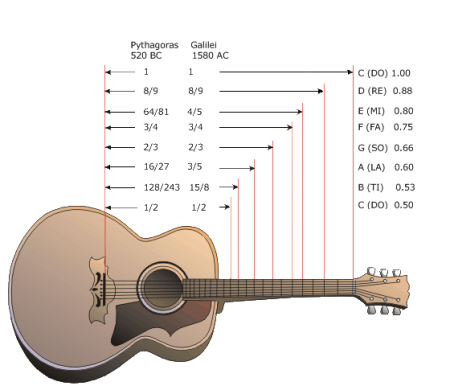Eric Johnson, most famous for "Cliffs of Dover"(1) says he can hear a difference in the batteries he uses in his gear - and I believe him. There are too many instances of elite (yeah, I used that word) people doing extraordinary things to pass it off as placebo effect.
We're not here to talk about guitars, though, we're here to talk about violins and their tone. Oh, and baseball bats. Like guitars, violins are made of wood plates with a structure inside and a soundboard on top - basically like everything in the string family.
But it's never so simple. Like in many things, we find that the Pythagoras idea that beauty results from perfect ratios(2) is evident in music beyond western notation - violins are designed to be structurally terrific so that the forces in the design are directed to a state of equilibrium while still producing nice sound. Aesthetics make them even better. Even Galileo couldn't help with guitar construction though he did help improve music.

Guitars rule. But one thing you can't do with a guitar is make it from a baseball bat.
I know, it sounds crazy. In most cases, guitar luthiers are kooky(3) but violin makers are beyond that - they are basically nuts about materials. You would think wood seasoned for 8-10 years won't warp or crack so it will be fine for material but some violin makers feel like if the wood is not 200 years old(!) it is a waste of time.
In the earliers stages of playing, or lower skill levels, people are pretty humble. I didn't buy a good guitar until I was 30 years old because I didn't feel worthy after only 17 years of playing. Then you have the mid-level people who can be a little snooty - those are the ones who will argue about materials and brands and debate music theory. If not snooty, they may still buy guitars they don't actually need, like me.
But at the high end people are a little more relaxed because they're good enough to make music out of anything. In the case of Glenn Donnellan, that means turning a Louisville Slugger baseball bat into a violin worthy of a guy who's played for the National Symphony Orchestra since 1997.
Why would he do such a thing? The NSO was doing an outreach program and travelling to Arkansas to do concerts for kids who may not get a lot of classical music so, in his words (4), "I thought it would be cool to say to the kids, 'Hey, you can make your own.' "
So he went to a Sports Authority, got a Louisville Slugger, and what he did next was totally bat-ass. And it involved hours of, I am sure, some amused watching by stagehands as he used their drill press to make the necessary holes in the bat.

What about aforementioned tone, you ask? What about varnish and catgut and ancient maple with a spruce belly?
I contacted Glenn to ask. His answer:
"Regarding tonality and structure, I am using a violin pickup under a very short bridge, more like a nut (short in order to place the strings close enough to the body of the bat for fingering). I have made this bridge out of various materials, and have found the material used in the current one to work the best, but it is still not even across all the strings, and doesn't have a large amount of output through the pickup.
"The sound that I have dialed up in my amp modeler works the best with this bridge/pickup combination. I am waiting for a custom built transducer bridge (pickup built into the bridge) to be sent to me that will hopefully be an improvement on my current setup, and will hopefully make a much greater timbrel world available to me."
So he is using the material equivalent of a cheap Korean guitar. That basically means when you play like this, you don't need no stinking 200 year old maple.
Check him out earlier this week at the Washington Nationals game and you'll see what I mean.
NOTES:
(1) If you are not familiar with Eric Johnson, here you go.



Comments